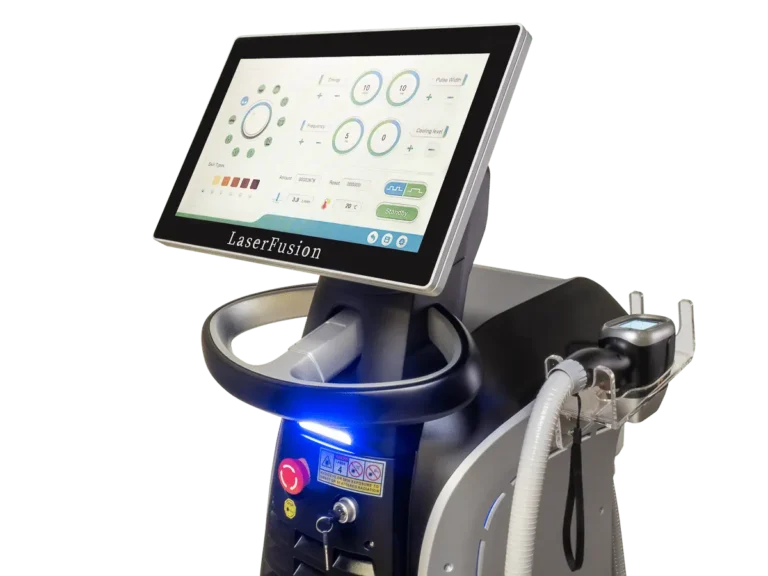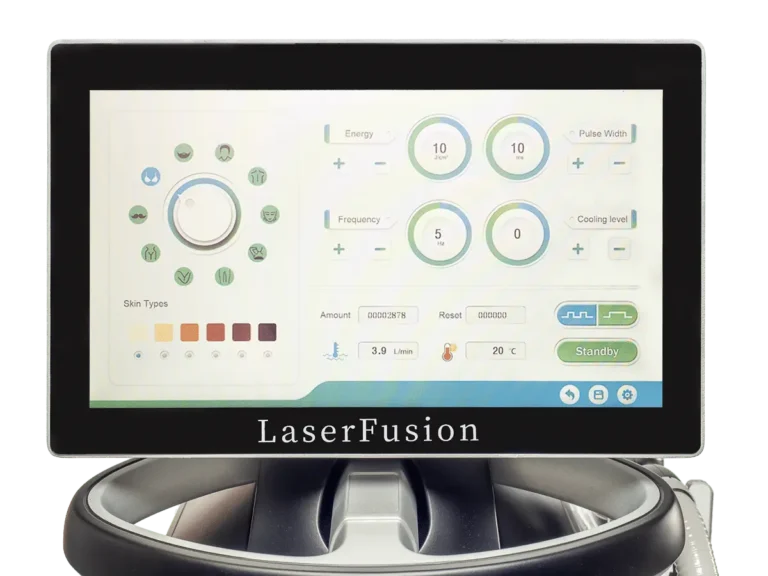In de snel evoluerende wereld van woontechnologie spelen slimme huizen een steeds prominentere rol. Deze innovatieve systemen bieden homeowners niet alleen meer comfort en gemak, maar ook aanzienlijke mogelijkheden voor energiebesparing. Met de opkomst van geavanceerde sensoren, intelligente thermostaten en geïntegreerde verlichtings- en apparatuurbesturing, kunnen homeowners tegenwoordig hun energieverbruik effectief monitoren en optimaliseren.
De toenemende populariteit van slimme huizen komt voort uit de overtuigende voordelen voor zowel de portemonnee als het milieu. Door het intelligente beheer van energie, kunnen homeowners hun maandelijkse kosten aanzienlijk verlagen, terwijl ze tegelijkertijd hun ecologische voetafdruk verkleinen. Bovendien bieden slimme huizen de mogelijkheid om toekomstige energie-innovaties te omarmen, waardoor homeowners verzekerd zijn van een duurzame, toekomstbestendige woning.
Key Takeaways
- Slimme huizen bieden aanzienlijke mogelijkheden voor energiebesparing door middel van geavanceerde technologie.
- Homeowners kunnen hun energieverbruik effectief monitoren en optimaliseren, wat leidt tot lagere maandelijkse kosten.
- Slimme huizen verkleinen de ecologische voetafdruk en maken woningen toekomstbestendig.
- Intuïtieve bediening en geïntegreerde apparaten zorgen voor meer comfort en gemak in het dagelijks leven.
- Slimme huizen zijn een groeiende trend met veel potentieel voor energiezuinig wonen.
Understanding Smart Home Technology and Energy Efficiency
As the world becomes increasingly focused on duurzame technologie (sustainable technology) and energiebesparende oplossingen (energy-saving solutions), the role of smart home technology in improving energy efficiency has gained significant attention. Smart home systems offer a comprehensive approach to managing energy consumption and reducing carbon footprints within the residential sector.
Key Components of Smart Home Systems
At the core of smart home technology are several key components that work together to optimize energy usage. These include slimme thermostaten (smart thermostats), advanced lighting controls, energy monitoring systems, and interconnected appliances. By integrating these elements, homeowners can gain precise control over their energy consumption and make informed decisions to drive down costs and minimize environmental impact.
The Evolution of Home Automation
The concept of home automation has evolved significantly over the years, moving from basic remote control capabilities to sophisticated, AI-driven systems. The advancements in sensor technology, wireless communication, and cloud computing have transformed the way we interact with and manage our homes. Today’s smart home solutions offer a seamless integration of various appliances, lighting, and climate control systems, enabling homeowners to achieve greater energy efficiency and convenience.
Integration Possibilities for Energy Management
- Centralized control panels or mobile apps that provide real-time monitoring and remote access to energy-consuming devices
- Automated schedules and routines that adjust lighting, temperature, and appliance usage based on occupancy patterns and energy-saving preferences
- Intelligent algorithms that optimize energy consumption by anticipating and responding to changing weather conditions, occupancy levels, and grid pricing signals
- Integration with renewable energy sources, such as solar panels and energy storage systems, to maximize self-sufficiency and reduce reliance on the grid
By harnessing the power of smart home technology, homeowners can unlock a world of duurzame technologie (sustainable technology) and energiebesparende oplossingen (energy-saving solutions), ultimately enhancing their homes’ energy efficiency and reducing their environmental footprint.
Smart Thermostats: The Gateway to Energy Savings
In the pursuit of energiezuinig wonen (energy-efficient living), smart thermostats have emerged as a game-changer. These intelligent devices offer homeowners a seamless way to slim energiebeheer (smart energy management) and unlock significant energy savings. At the heart of the slimme thermostaten (smart thermostat) revolution lies the ability to precisely control and optimize temperature settings, adapting to your lifestyle and preferences.
Smart thermostats go beyond the traditional manual adjustments, leveraging advanced sensors and algorithms to create a personalized climate control system. By automatically adjusting temperatures based on occupancy, time of day, and even weather conditions, these devices can maximize energy efficiency while maintaining your desired level of comfort.
- Automated scheduling: Smart thermostats learn your daily routines and adjust temperatures accordingly, ensuring your home is comfortable when you need it and energy-efficient when you don’t.
- Remote access: With the convenience of mobile apps or voice commands, you can effortlessly control your home’s temperature from anywhere, making it easy to fine-tune your settings on the go.
- Adaptive learning: Advanced algorithms analyze your temperature preferences and adapt over time, continuously optimizing your home’s energy usage to deliver maximum savings.
By embracing the power of slimme thermostaten, homeowners can unlock a new era of energiezuinig wonen and slim energiebeheer. These intelligent devices pave the way for a more sustainable and cost-effective home environment, empowering you to take control of your energy consumption and contribute to a greener future.
Intelligent Lighting Systems and Their Impact on Energy Consumption
As part of the smart home revolution, intelligent lighting systems have emerged as a powerful tool for reducing energy consumption. By harnessing the latest advancements in LED technology and smart controls, homeowners can now enjoy slimme verlichting (smart lighting) that not only enhances the ambiance of their living spaces but also delivers significant energiebesparende oplossingen (energy-saving solutions).
LED Technology and Smart Controls
The transition from traditional incandescent bulbs to energy-efficient LED lighting has been a game-changer in the realm of duurzame technologie (sustainable technology). LED bulbs consume up to 80% less energy than their incandescent counterparts, while also offering longer lifespans and superior light quality. When combined with smart controls, such as wireless connectivity and mobile app integration, LED lighting systems can be programmed to automatically adjust brightness, color, and schedules to optimize energy usage.
Motion Sensors and Automated Scheduling
Another key component of intelligent lighting systems is the integration of motion sensors. These sensors can detect occupancy and automatically turn lights on or off, ensuring that energy is only consumed when a room is in use. Additionally, automated scheduling allows homeowners to set custom lighting routines, turning lights on and off at predetermined times to match their daily habits and further reduce energy consumption.
Daylight Harvesting Solutions
To take energy efficiency to the next level, smart lighting systems can also incorporate daylight harvesting solutions. These systems use sensors to detect the amount of natural light present in a room and adjust artificial lighting accordingly, minimizing the need for electric lighting during daylight hours. By seamlessly integrating with the home’s slimme verlichting, daylight harvesting solutions contribute to a more holistic energiebesparende oplossingen approach.
The implementation of intelligent lighting systems in the home not only reduces energy costs but also aligns with the growing demand for duurzame technologie. As homeowners become more conscious of their environmental impact, the adoption of these advanced slimme verlichting solutions will continue to play a crucial role in achieving greater energy efficiency and sustainability.
Energy Monitoring Systems: Real-Time Insights
In the pursuit of energiebesparende oplossingen (energy-saving solutions), homeowners are increasingly turning to energiemonitor (energy monitoring) systems to gain real-time insights into their energy consumption. These innovative technologies provide a valuable window into a home’s energy usage, empowering residents to make informed decisions for slim energiebeheer (efficient energy management).
Energy monitoring systems track and analyze the energy footprint of individual appliances, lighting, and other electronic devices in a home. By collecting and displaying this data in user-friendly dashboards, these systems enable homeowners to identify energy-wasting habits and appliances that contribute to unnecessarily high utility bills.
- Pinpoint energy-guzzling appliances and devices
- Analyze energy consumption patterns over time
- Receive personalized recommendations for energy-saving improvements
With this granular understanding of their home’s energy profile, homeowners can make targeted adjustments to their daily routines and upgrade to more energy-efficient equipment. From adjusting thermostat settings to replacing outdated appliances, these energiebesparende oplossingen can lead to significant long-term savings on utility costs.
Energy monitoring systems are an invaluable tool in the quest for smarter, more sustainable home management. By providing real-time insights, these technologies empower homeowners to take control of their energy usage and make impactful changes for a more slim energiebeheer.
Wat maakt slimme huizen aantrekkelijk voor energiebesparing?
De opkomst van energiezuinig wonen en duurzame technologie heeft de interesse in slimme huizen sterk doen toenemen. Slimme huizen bieden niet alleen concrete besparingen op energiekosten, maar spelen ook een cruciale rol in het verminderen van de CO2-uitstoot en het toekomstbestendig maken van ons woningen.
Kosten-batenanalyse
De initiële investeringen in slim energiebeheer systemen kunnen hoger zijn dan traditionele oplossingen, maar de langetermijnbesparingen op energie- en onderhoudskosten wegen hier ruimschoots tegenop. Slimme thermostaten, efficiënte verlichting en geavanceerde apparaten kunnen de energierekening aanzienlijk verlagen, waardoor de investering zich snel terugverdient.
Milieu-impact
Slimme huizen spelen een belangrijke rol in de overgang naar een duurzamere toekomst. Door energiezuinig wonen te bevorderen, kunnen huishoudens hun CO2-voetafdruk drastisch verminderen. Bovendien biedt duurzame technologie de mogelijkheid om hernieuwbare energie op efficiënte wijze te integreren en op te slaan, waardoor ons energieverbruik schoner en groener wordt.
Toekomstbestendig wonen
De voordelen van slim energiebeheer reiken verder dan alleen kostenbesparingen en milieu-impact. Slimme huizen zijn ook beter voorbereid op toekomstige ontwikkelingen, zoals de opkomst van elektrische voertuigen, veranderende energienetwerken en strengere regelgeving rond duurzaamheid. Door nu te investeren in energiezuinig wonen, kunnen huiseigenaren hun woning toekomstbestendig maken en profiteren van de voortdurende innovaties op het gebied van duurzame technologie.
Smart Appliances and Their Role in Energy Conservation
In the pursuit of energiebesparende oplossingen and slim energiebeheer, smart appliances have emerged as a game-changer in the realm of duurzame technologie. These innovative home devices are designed to not only enhance our daily lives but also play a pivotal role in conserving energy and reducing our environmental footprint.
Smart appliances are equipped with advanced sensors, microprocessors, and connectivity features that allow them to communicate with other smart home systems. This integration enables seamless energy management, ensuring optimal efficiency and minimizing waste. From intelligent refrigerators that monitor usage patterns to water-saving dishwashers that automatically adjust cycle times, the impact of smart appliances on energy conservation is undeniable.
Harnessing the Power of Smart Appliances
Smart appliances offer a range of features that contribute to energy savings:
- Adaptive operation: Smart appliances can adjust their energy consumption based on usage patterns, load, and real-time energy prices, ensuring efficient and cost-effective performance.
- Intelligent scheduling: These appliances can be programmed to run during off-peak hours or when energy demand is lower, reducing the strain on the power grid.
- Remote monitoring and control: Homeowners can monitor and control their appliances remotely through smartphones or voice assistants, allowing them to make informed decisions about energy usage.
- Energy-efficient technologies: Smart appliances often incorporate cutting-edge technologies, such as LED lighting, variable-speed motors, and advanced insulation, to minimize energy consumption.
| Smart Appliance | Energy-Saving Features | Estimated Energy Savings |
|---|---|---|
| Smart Refrigerator | Adaptive temperature control, door sensors, and energy-efficient compressors | Up to 25% energy savings compared to traditional refrigerators |
| Smart Washing Machine | Automatic load sensing, water level adjustment, and energy-efficient wash cycles | Up to 20% energy and water savings compared to conventional models |
| Smart Oven | Precise temperature control, preheating optimization, and automatic shut-off | Up to 15% energy savings compared to traditional ovens |
As homeowners embrace the energiebesparende oplossingen offered by smart appliances, they can not only reduce their energy consumption but also contribute to a more sustainable future through slim energiebeheer and duurzame technologie.
Home Energy Storage and Smart Grid Integration
As the world continues to embrace energiezuinig wonen and duurzame technologie, the role of home energy storage and smart grid integration has become increasingly vital in the pursuit of slim energiebeheer. This section delves into the transformative potential of these innovative solutions, empowering homeowners to take control of their energy consumption and achieve greater grid independence.
Battery Technologies
The advancements in battery technology have revolutionized the way we store and manage energy within our homes. From lithium-ion to flow batteries, homeowners can now invest in reliable and efficient energy storage systems that can seamlessly integrate with their smart home infrastructure. These cutting-edge battery solutions not only provide backup power during outages but also enable homeowners to optimize their energy usage, reducing their carbon footprint and utility bills.
Peak Load Management
Smart grid integration and home energy storage work hand-in-hand to facilitate peak load management. By leveraging real-time data and advanced algorithms, homeowners can strategically store energy during off-peak hours and deploy it during times of high demand. This dynamic approach to energy management helps to reduce strain on the grid, while also providing homeowners with greater control over their energy costs.
Grid Independence Options
- Renewable energy integration: Combining home energy storage with on-site renewable energy sources, such as solar panels or wind turbines, allows homeowners to achieve a higher degree of grid independence and self-sufficiency.
- Microgrid capabilities: Advanced smart home systems can enable homeowners to operate in a microgrid configuration, allowing them to disconnect from the main grid and rely on their own energy resources during grid outages or periods of high demand.
- Dynamic load balancing: Intelligent energy management systems can optimize the distribution of energy within the home, prioritizing critical loads and seamlessly shifting between grid-supplied and stored energy to maintain reliable and efficient power delivery.
By embracing the transformative potential of home energy storage and smart grid integration, homeowners can unlock a future of energiezuinig wonen, duurzame technologie, and slim energiebeheer. These innovative solutions empower individuals to take control of their energy consumption, reduce their environmental impact, and future-proof their homes for the ever-evolving energy landscape.
Smart Window Solutions and Climate Control
In the quest for energiebesparende oplossingen and duurzame technologie, smart window solutions are emerging as a game-changer in the world of slim energiebeheer. These innovative technologies not only enhance the aesthetic appeal of your home but also play a crucial role in optimizing energy efficiency and climate control.
Smart glass, a marvel of modern engineering, is designed to adapt to changing light conditions and temperature fluctuations. By automatically adjusting the tint or opacity of the glass, these windows can effectively regulate the amount of sunlight and heat entering your home, reducing the strain on your HVAC system and leading to significant energy savings.
Automated shading systems, another cutting-edge innovation, work in tandem with smart glass to provide a comprehensive climate control solution. These systems utilize sensors and algorithms to track the sun’s position and adjust the shades accordingly, ensuring your living spaces remain comfortable and energy-efficient throughout the day.
The integration of smart window solutions with other smart home components, such as smart thermostats and energy monitoring systems, further amplifies their impact. By sharing real-time data and coordinating their actions, these interconnected systems create a seamless and intelligent climate control ecosystem, optimizing energy usage and enhancing overall comfort.
As the demand for energiebesparende oplossingen and duurzame technologie continues to grow, smart window solutions are poised to play a pivotal role in the future of sustainable living. By harnessing the power of slim energiebeheer, homeowners can enjoy the perfect balance of comfort, energy efficiency, and environmental responsibility.
Voice-Controlled Energy Management Systems
In the era of smart home technology, voice-controlled energy management systems have emerged as a game-changing solution for homeowners seeking to streamline their energy usage. By seamlessly integrating popular voice assistant platforms, these innovative systems empower users to effortlessly manage their home’s slim energiebeheer, enabling them to achieve remarkable energiebesparende oplossingen and embrace the future of duurzame technologie.
Popular Voice Assistant Platforms
Leading the charge in voice-controlled energy management are prominent digital assistants like Amazon’s Alexa, Google Assistant, and Apple’s Siri. These powerful platforms allow homeowners to issue simple voice commands to adjust thermostats, control lighting, and monitor energy consumption, all without the need for manual intervention.
Energy Command Integration
- Seamless integration with smart home devices and appliances
- Intuitive voice-based control of temperature, lighting, and energy usage
- Real-time energy consumption monitoring and analytics
- Customizable automation rules for optimal energiebesparende oplossingen
By harnessing the capabilities of these voice-controlled systems, homeowners can effortlessly manage their home’s slim energiebeheer, reducing energy waste and promoting a more duurzame technologie lifestyle. The convenience and efficiency of these solutions make them an increasingly appealing choice for those seeking to take control of their energy consumption and reduce their environmental footprint.
Remote Energy Management via Smartphone Apps
The rise of smartphone apps has revolutionized the way homeowners manage their energy consumption. These cutting-edge energiemonitor solutions offer a convenient and accessible platform for remote energy management, empowering homeowners to take control of their slim energiebeheer and unlock the full potential of energiebesparende oplossingen.
With a simple tap on their mobile devices, homeowners can now monitor their energy usage in real-time, receive alerts for spikes in consumption, and even remotely adjust their smart home settings. These apps provide a comprehensive overview of a home’s energiemonitor, allowing users to identify areas for improvement and implement targeted energiebesparende oplossingen.
Beyond monitoring, these smartphone apps also enable homeowners to control various slim energiebeheer components of their smart homes, such as smart thermostats, lighting systems, and appliances. This level of remote access and control not only enhances the convenience factor but also amplifies the energy-saving capabilities of a smart home, making it a truly attractive choice for homeowners seeking to optimize their energy usage.








